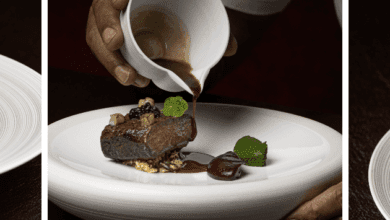Busting recycling misconceptions in hospitality
Jenny Wassenaar, Chief Sustainability Officer & SVP Global R&D, Trivium Packaging discusses the role the catering industry can play in building a circular economy

Register to get 1 free article
Reveal the article below by registering for our email newsletter.
Want unlimited access? View Plans
Already have an account? Sign in
Though recycling has long been seen as a solution to packaging waste, it’s time to rethink our habits. According to a study from the University of Georgia, of the 8.3 billion metric tons of plastics generated since the 1950s, only 9% has been recycled, 12% has been incinerated, and a staggering 79%, or 6.3 Billion metric tonnes of plastic waste, are in landfill.
Though many caterers and consumers are eager to recycle, the truth is, it shouldn’t be used as the only solution to mitigate packaging waste. It must be coupled with an overall reduction in single-use packaging and a switch to infinitely recyclable material to truly contribute to the fight against packaging waste and environmental pollution.
The state of global recycling
Packaging waste is often forgotten after bin collection. Yet, its journey has only just begun. Faced with chemical safety hurdles, contamination issues, complex materials, and varying waste management processes, recycling plants are overwhelmed. In a UK study, this resulted in less than half of all recyclable plastic being recycled.
Unclear labelling further intensifies the issue. For example, the commonly used green arrows label means only 75% of local authorities can process the packaging. In addition, the Food Packaging Forum, states that plastic has limited recycling possibilities. So, even if labelled recyclable, many types of plastic ultimately can’t be recycled, and if they can, their lifecycle is limited.
A report by The Times found that recycling plants are overwhelmed with thousands of tonnes of plastic packaging waste ending up in incinerators due to a lack of capacity. Similarly, in Europe, approximately half of all collected recyclable plastic is exported overseas due to capacity problems. The situation is echoed across the world, with a 2022 OECD Report finding that the bulk of plastic ends up in landfill, incinerated, or leaks into the environment.
How to make more sustainable choices
For restaurants and bars, some items, for the time being, will be single-use. Logistically, buying in bulk means a greater likelihood of disposable materials; however, wherever possible, opting for a refillable or recyclable vessel will vastly reduce your levels of waste. Look for schemes with suppliers that allow you to refill or return your toiletries, cleaning products, and food and beverage products.
And it doesn’t need to stop in your kitchen. In recent years, we’ve seen an increase in the number of takeaways trialling schemes for returnable containers, and in Scotland, it will soon be mandatory for those selling takeaway drinks to operate a return point. For the on-the-go customer, in 2019, The Global Action Plan Youth Panel launched the #Longlivethelunchbox campaign in which restaurants and cafes taking part accepted the customer’s lunchbox. Both schemes help to educate and inform the consumer on adopting a sustainability mentality as well as minimising overall waste.
For those items you cannot feasibly refill or return, opting for infinitely recyclable material will ensure a reduction of waste. For example, choosing glass or metal ensures the material you recycle has an infinite life cycle and is used again and again. However, glass is heavier in transit and can be prone to breakages, whereas metal offers lightweight durability, with 80% of this material (ever created) still in existence today. In addition, only a fraction of the energy is needed to recycle a metal product. As an industry that naturally caters to mass audiences, making swaps such as these will immediately have a widespread impact.
Of course, the responsibility cannot only be on those purchasing goods in the catering industry. Suppliers must be looking for new innovative ways to distribute and refill products, as well as supporting the industry by offering products in infinitely recyclable materials. Legislation has a huge part to play in guiding organisations too. For example, the proposed Packaging and Packaging Waste Regulation (PPWR) in Europe aims to incentivise the use of recyclable packaging, including by – among other measures – placing market restrictions and higher extended producer responsibility (EPR) fees on packaging materials that are inherently difficult to recycle at scale.
The price of plastic on the environment
Our time to act is now. Without intervention, the climate will worsen, and increased costs to make the swap now will be much less than the ultimate cost to the economy caused by climate disruption. Businesses that show they are making sustainable changes now have the bonus of standing out to consumers, with 74% of consumers willing to buy products in refillable containers and 77% willing to spend more on sustainable options.
Society is built around disposable packaging; certain products in food and beverages rely on single-use packaging to sell their products. As such, caterers have an opportunity to make a tangible impact on waste reduction by opting for products packaged in a vessel which is genuinely recyclable and infinitely so.







